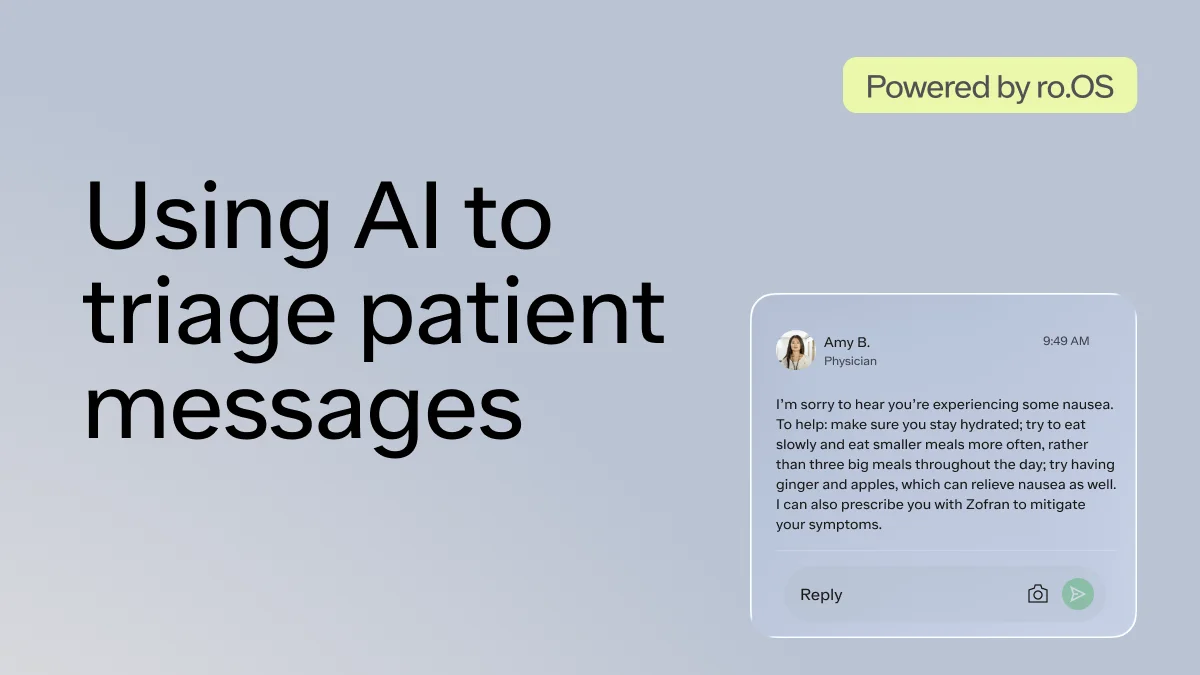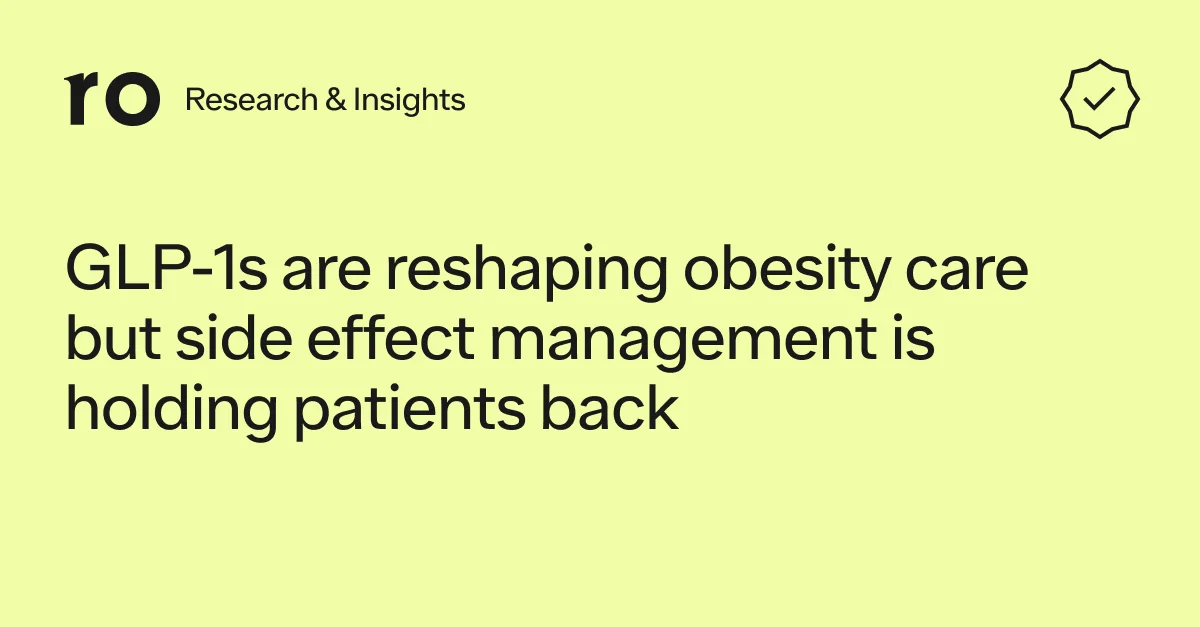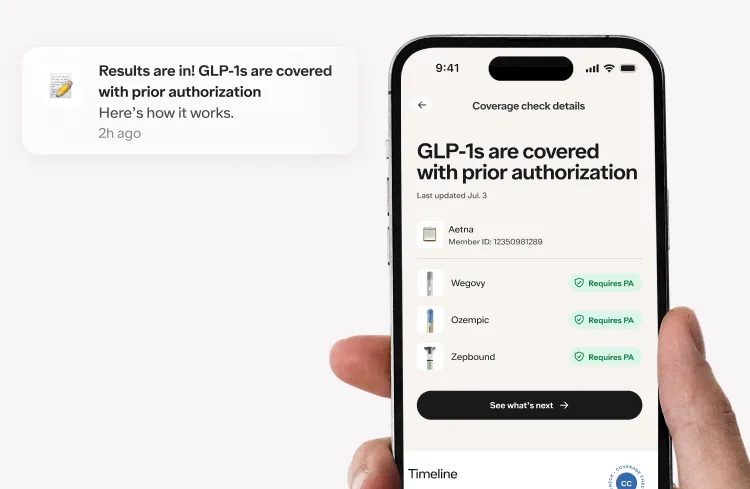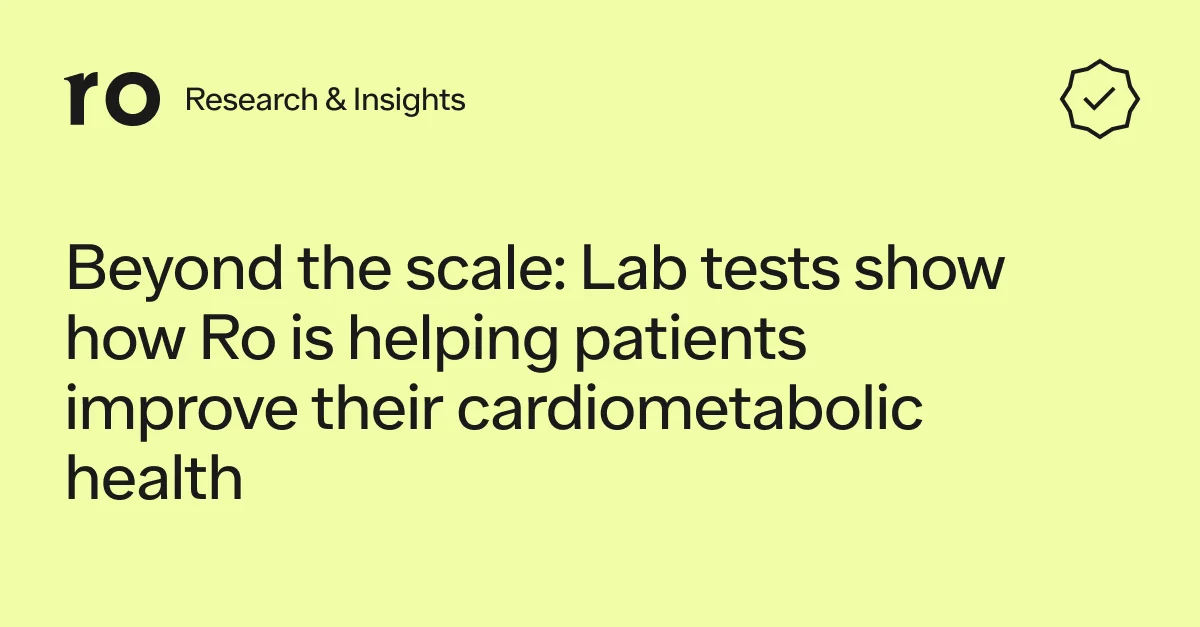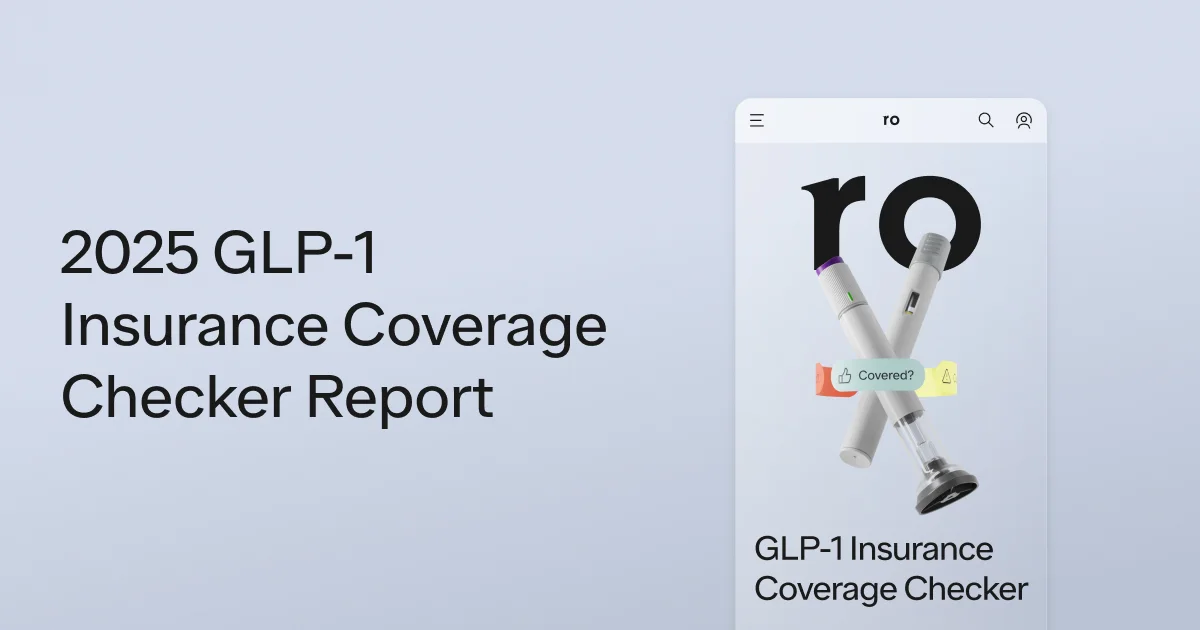Health care inequality in America is a big problem and telemedicine is a promising solution.
Currently, America leads the industrialized world in health care inequality. This means that an individual’s access to quality health care can vary widely based on factors that shouldn’t matter — factors including but not limited to race, gender, age, geography, and socioeconomic status.
Telemedicine holds the promise of democratizing our health care system so that any patient of any race, gender, age, geography, and socioeconomic status can have access to high-quality care when they need it.
But are telemedicine services truly accessible to everyone? Because telemedicine requires internet connectivity, it may depend on how these services are delivered. At Ro, we did some research to find out.
A study conducted at Ro demonstrates how the lack of high-speed internet availability in patients’ communities can limit their access to telemedicine, but only in states where a video call is required by law. Patients who live in states where other, less broadband-dependent modalities are allowed (phone or asynchronous models) are able to get care regardless of the internet coverage where they live.
The nonprofit organization The Third Way found that broadband internet availability is significantly lower in communities that are more rural, have a greater percentage of minorities, and have more economic distress.
If lack of broadband availability is both a function of inequality and a barrier to receiving telemedicine services, then telemedicine could be contributing to unequal access to healthcare instead of helping to solve the problem. This means that the very patients that might benefit the most from telemedicine are prevented from taking advantage of it.
We conducted our own study to answer this question: Does limited broadband availability prevent patients from accessing health care using telemedicine?
The short answer is, it does — but only in certain states.
Why only in certain states? Because not all telemedicine models require high-speed internet. For example, one unique feature of Ro’s platform is our ability to facilitate communication between a patient and their physician asynchronously, enabling both to share relevant information whenever they need. This also makes the visit less tethered to in-the-moment internet access.
However, states have different laws about whether care and treatment can be delivered entirely through asynchronous technology (sometimes called “store and forward” technology). States that do not permit asynchronous telemedicine require an additional, real-time phone or video call to establish a patient relationship.
Our data shows that state laws requiring patients to complete a video call during a telemedicine visit — something that requires better internet access — have an impact on the number of people who are able to use our platform.
Our study is important because our results account for differences in state-level policy around modality requirements. To accomplish this, we used Ro’s large dataset and mirrored methods from prior research.

Two 2019 studies published in JAMA and Annals of Internal Medicine found a relationship between broadband availability and telemedicine access. The studies showed that, as broadband availability decreased, so did telemedicine use — especially in highly rural areas. For example, the JAMA study found that in fully rural counties, low broadband availability was associated with 34% fewer telemedicine visits per capita compared to the number of visits in counties with high broadband availability.
We took a random sample of 10,000 members being treated on our platform. We then geolocated them within their county of residence and integrated Federal Communications Commission (FCC) data on the percentage of the population that is able to purchase broadband. Using the JAMA study as a guide, we then grouped counties into three categories of broadband availability: low (0%- 40%), medium (>40%-70%), and high (>70%). Our ultimate objective was twofold. First, we wanted to confirm the JAMA study’s conclusion that broadband availability is associated with access to telemedicine. Second, we wanted to see if this causes a difference in the number of members using our platform depending on whether members live in restricted telemedicine modality states (where a video call is required) or unrestricted telemedicine modality states (where a video call is not required).

Our map is interactive. Click here to explore broadband availability for each county.
To start, we looked at the average number of Ro members in each county across these three categories for unrestricted states and restricted states. We show this in the graph below: the Y-axis represents the average number of members in a given county and the X-axis represents each category of broadband availability. The dots represent the averages and the bars represent the confidence intervals.
Right away, we noticed a key difference in the relationship between broadband availability and access depending on video call requirements..

Based on our raw data, we saw some preliminary answers to both of our objectives.
First, we saw that broadband availability is strongly associated with the number of members using our platform in restricted states requiring a video call, but is not strongly associated with the number of members using our platform in unrestricted states that don’t require video calls. You can get a sense of this by looking at the graph. Notice how in restricted states, the number of accounts seems to increase as broadband availability increases. However, in unrestricted states, there is not such an obvious relationship between the two.
Second, the raw data showed a difference between the number of members using our platform in restricted states versus in unrestricted states, but only when broadband availability is low. Notably, restricted states have fewer members per county than unrestricted states in these areas.
On the graph, you can see this difference because the confidence intervals for restricted states and unrestricted states do not overlap for those with low broadband availability and do overlap for those with medium or high broadband availability.
This rough analysis indicated that the presence of a video call does not act as a deterrent in areas where there are ample internet speeds but it may create a barrier in areas where the availability of high-speed internet is low.
We then built a more sophisticated statistical model, but the results stayed mostly the same — broadband availability is associated with the number of members using our platform and, when broadband availability is low, this number is lower in restricted states requiring a video call than in unrestricted states not requiring a video call.
Our next step was to delve further into the data and to remove the influence of confounding variables. That is, we wanted to make sure our conclusions weren’t incorrectly arrived at because of other factors. To do this, we used a technique from statistics called multiple regression (we won’t go into great detail here but for anyone curious about the specifics of how we modeled this data using a poisson generalized linear model with an interaction term, we want to be transparent about our methods: here’s a link to our step-by-step R code).

This involved adding several confounders in our calculations, similar to the approach in the JAMA study. The possible confounders included were:
County population
County population density
Number of primary care physicians practicing in the county
Percentage of county residents that are female
Percentage of county residents that graduated from high school
Percentage of county residents over the age of 65
Percentage of county residents that are rural-residing
Whether the county was nested in a restricted state or a unrestricted state
We used the University of Wisconsin’s county-level health care and demographic database and a few variables from census data to gather this information.
Our results? Broadband availability is associated with the number of members using our platform, even when accounting for possible confounding factors. Additionally, when comparing restricted states versus unrestricted states, we found the same disparity as we did in our initial analysis. Where broadband availability is low, the number of members on Ro’s platform is two times lower in restricted states compared to unrestricted states.

Similar to the previous graph, the Y-axis represents the average number of members in a given county predicted by our model and the X-axis represents each category of broadband availability. The dots represent the predicted averages and the bars represent the confidence intervals. Notice that if you were to draw a best-fit line through the blue dots, it would be relatively flat. This tells us that there is no real relationship between broadband availability and the number of members in unrestricted states. However, the best-fit line through the red dots would have a steep slope, which tells us that there is a strong relationship between broadband availability and the number of members in restricted states. Additionally, the confidence intervals again do not overlap in areas of low broadband access, indicating a statistically significant difference in the number of people using our platform (with fewer restricted state users than unrestricted state users). Interestingly, a statistically significant difference also exists in areas of high broadband access and the relationship is reversed — we do not have a hypothesis for why this is the case.
The bottom line: Our findings suggest that imposing a video call requirement for all patient visits might contribute to health care inequality.
Of course, it is always important to acknowledge that there might be additional confounders that we didn’t include. Like any other study, there are also limitations, one being that we only used Ro’s data and that the results might not be generalizable to everyone.
Limitations notwithstanding, our data suggest that imposing a video requirement for all patient visits — when it might not be clinically necessary — can be a barrier to care for people who lack access to fast, reliable, internet communication, potentially contributing to the very real access problems telemedicine aims to solve.
At the same time, our results suggest that the asynchronous model of unrestricted states holds promise for increasing access to care for appropriate patients where broadband availability is low and video calls simply aren’t an option.
We believe that these results are critical to the conversation that is happening around telemedicine policy.
At Ro, we believe patients should not be prevented from using telemedicine solely because they lack the resources to communicate with a provider via video.
Instead, we believe that providers and patients should work together to determine the types of technology — asynchronous, video, and/or phone call — that best fit their needs, regardless of where they live (of course, while still delivering the standard of care).
While improving broadband availability across America is important for a multitude of reasons, it’s a big hurdle to overcome. In the meantime, we can still facilitate equal access to healthcare in the shorter-term with policies that support the asynchronous model. This way, regardless of race, geography, or income, everyone can access high quality, affordable care.
